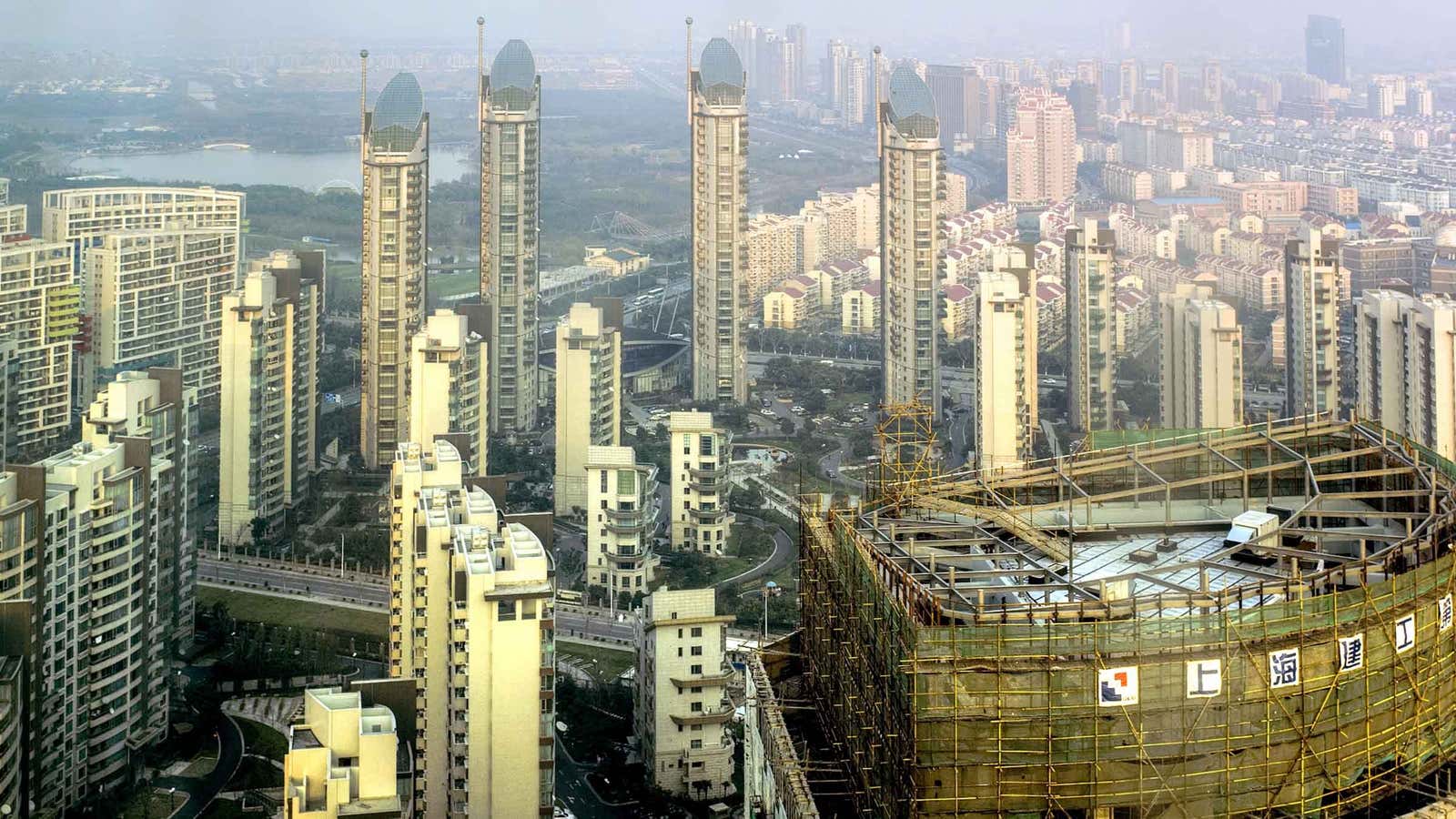New-home prices in China rose by 0.1% in October from a year earlier, their first annual increase in 14 months, according to data from the National Bureau of Statistics (link in Chinese).
But the rising prices don’t guarantee an end to China’s property glut yet. Annual new-home price increases were concentrated in just 16 of the 70 cities counted, where they rose steeply in some cities—prices in Shenzhen and Shanghai rose by 39.9% and 10.9%, respectively.
Prices declined in the remaining 54 cities, the most severe being Zhanjiang, in Guangdong province, which was down 6.5% from last year. That suggests that a property glut still exists in China’s less glamorous cities, where developers invested heavily during the boom to take advantage of cheaper land. If those cities’ governments can’t attract companies and workers to settle there, then the overall market could suffer from an oversupply for some time.
But news of even an overall increase in real estate prices couldn’t come soon enough for the Chinese government, which has been pulling out all the stops to improve the economy. That’s included lowering the cost of borrowing, reducing banks’ required reserve ratios, and encouraging middle class households to ride the stock market.
After all that, the best stimulus might simply be a return to China’s status-quo: a thriving property market. Last year, the sector accounted for 15% (pdf) of China’s GDP, the sector creates a huge numbers of private sector jobs, and land sales for new buildings generate revenue for local governments.
Image by Thomas Depenbusch on Flickr, licensed under CC-BY-2.0.




